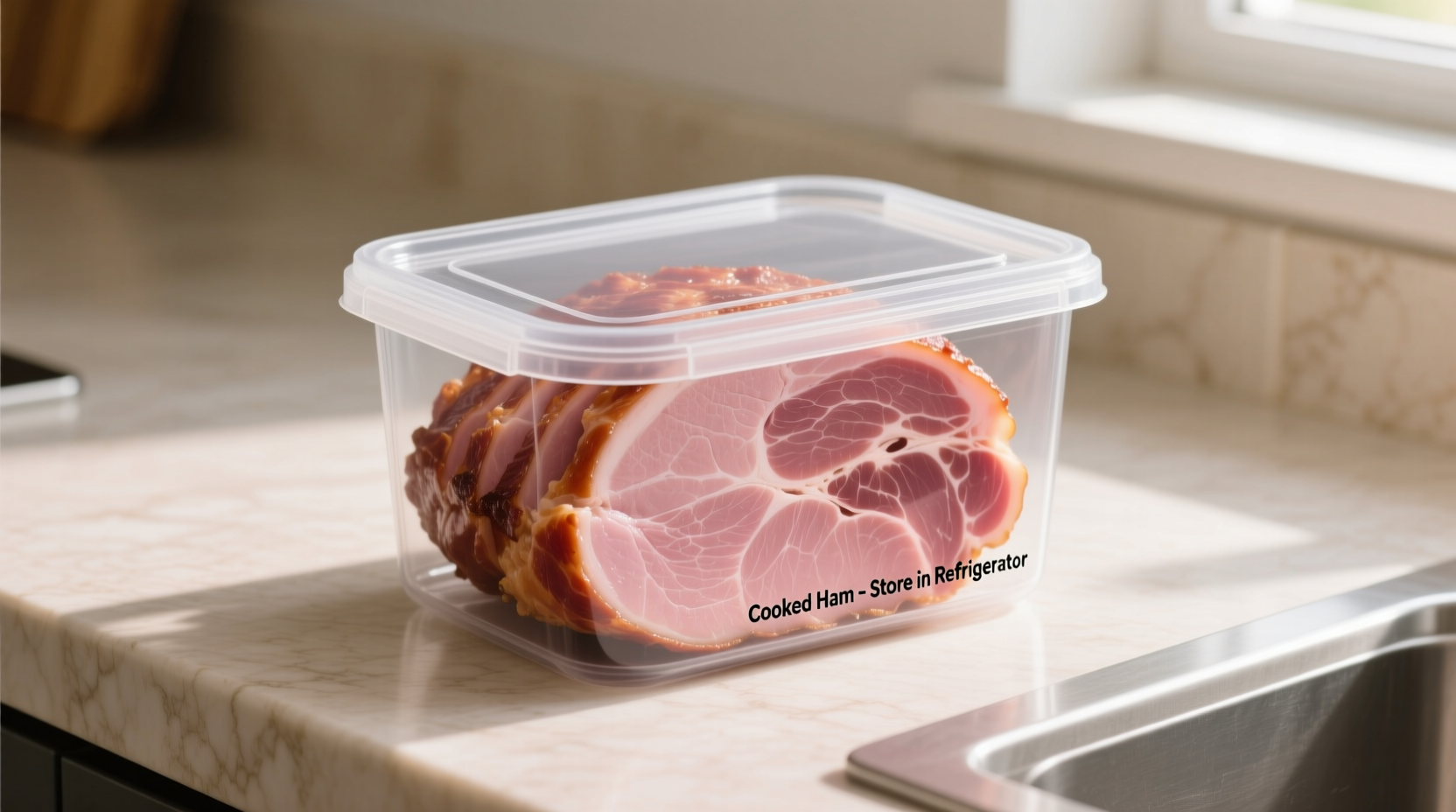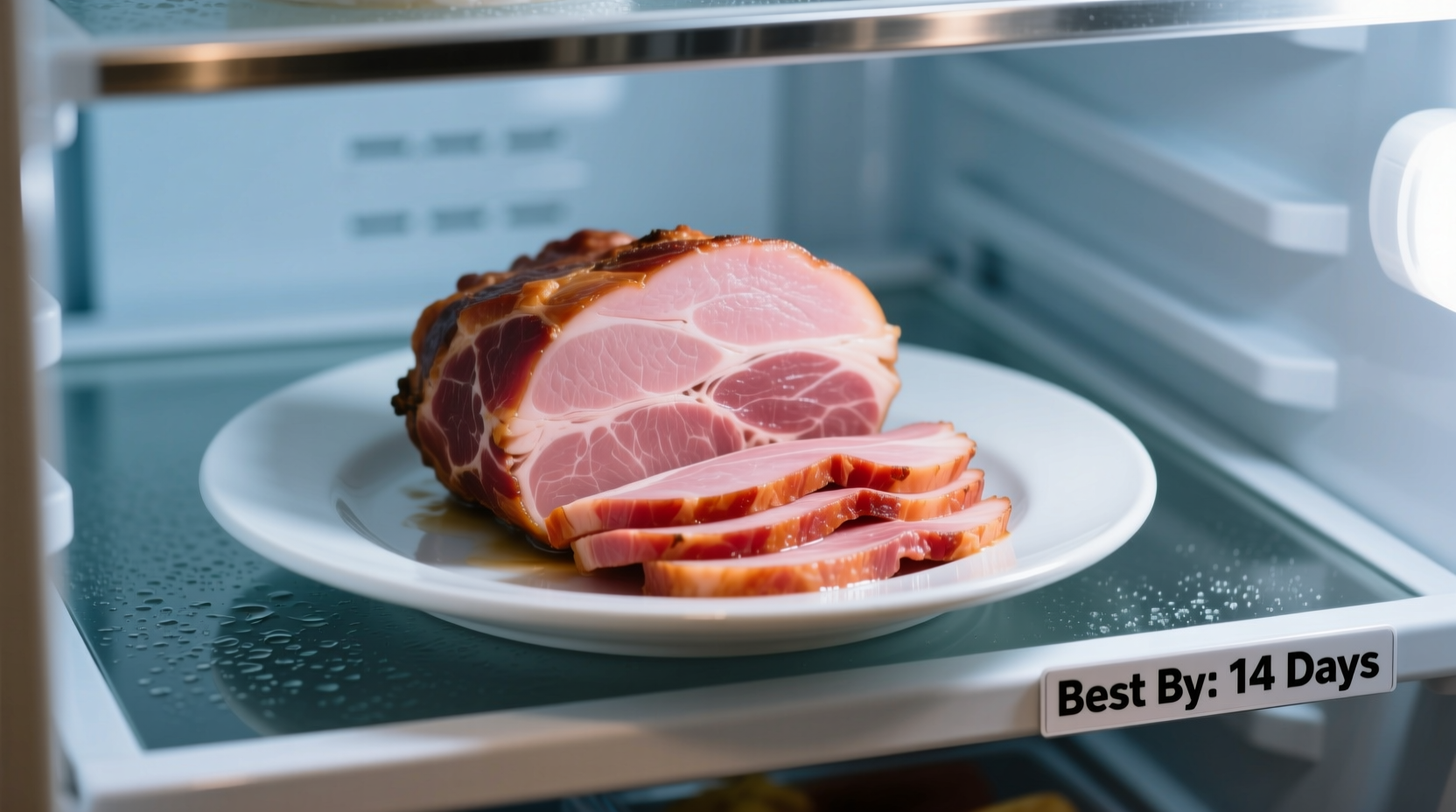
Why Ham Safety Matters More Than You Think
Every year, millions of people experience foodborne illnesses from improperly stored cooked meats. Knowing exactly how long is cooked ham good for in fridge situations isn't just about avoiding waste—it's about protecting your family's health. Many home cooks mistakenly believe ham lasts longer than it actually does, putting themselves at risk for food poisoning from bacteria like Listeria monocytogenes that thrive in refrigerated conditions.
Understanding Ham Spoilage: The Science Behind the Clock
Cooked ham provides an ideal environment for bacterial growth due to its moisture content and protein composition. Even in refrigeration, certain pathogens continue multiplying slowly. The 3-4 day window represents the point where bacterial counts typically reach potentially dangerous levels.
Three critical factors determine your ham's actual shelf life:
- Initial cooking temperature - Properly cooked ham (reaching 145°F with 3-minute rest) starts with lower bacterial counts
- Cooling speed - Ham cooled slowly from cooking temperature develops more bacteria
- Storage consistency - Temperature fluctuations dramatically shorten safe storage time
Official Food Safety Guidelines Compared
| Ham Type | USDA Recommendation | FDA Food Code | Practical Maximum |
|---|---|---|---|
| Whole cooked ham | 3-4 days | 4 days | 4 days |
| Spiral-cut ham | 3-5 days | 3 days | 3 days |
| Deli-sliced ham | 3-5 days | 3-5 days | 3 days |
| Leftover ham dishes | 3-4 days | 4 days | 4 days |
According to the USDA Food Safety and Inspection Service, all cooked ham should be consumed within this narrow window regardless of packaging claims. The FDA Food Code reinforces this timeframe for commercial food operations, recognizing that home refrigerators often operate at less consistent temperatures than commercial units.
Maximizing Your Ham's Safe Storage Life: A Step-by-Step Guide
Follow these evidence-based steps immediately after cooking or purchasing ham to maximize its safe refrigerator life:
- Cool rapidly - Divide large portions into smaller containers to cool faster (within 2 hours of cooking)
- Use proper containers - Transfer ham to airtight containers or wrap tightly in aluminum foil or plastic wrap
- Store correctly - Place in the coldest part of your refrigerator (usually the back, bottom shelf)
- Maintain temperature - Verify your refrigerator stays at 40°F (4°C) or below using an independent thermometer
- Minimize exposure - Return ham to refrigerator immediately after serving
When Is Cooked Ham No Longer Safe? Critical Warning Signs
Don't rely solely on the calendar—always check for these spoilage indicators before consuming refrigerated ham:
- Texture changes - Slimy or sticky surface that doesn't wash off
- Odor changes - Sour, rotten, or unpleasant smell (fresh ham should have mild, pleasant aroma)
- Visual changes - Discoloration (gray, green, or black spots), especially around edges
- Mold presence - Any visible mold growth (discard entire piece, not just moldy section)
According to food safety experts at FoodSafety.gov, if you notice any of these signs, discard the ham immediately. "When in doubt, throw it out" is the only safe approach with potentially spoiled meat products.
Special Considerations for Holiday Hams and Leftovers
Holiday meals often create unique storage challenges. Consider these specific scenarios:
- Spiral-cut hams - The increased surface area from slicing reduces safe storage to just 3 days
- Glazed hams - Sugary glazes can accelerate spoilage; consume within 3 days
- Ham on the bone - Lasts slightly longer than boneless (up to 4 days) if properly wrapped
- Cooked ham dishes - Casseroles and soups containing ham follow the 3-4 day rule
For large holiday meals, divide leftovers into single-serving portions before refrigerating. This minimizes repeated temperature exposure when serving additional portions.
Smart Ways to Use Leftover Ham Before It Expires
Beat the clock by transforming your ham into these delicious, safe dishes:
- Day 1-2 - Simple sandwiches, salads, or as a protein addition to meals
- Day 3 - Incorporate into soups, stews, or casseroles (cooking kills surface bacteria)
- Day 4 - Freeze any unused portions for future use (see freezing guidelines below)
Remember that how long cooked ham good for in refrigerator directly impacts your meal planning. Proper timing ensures you use leftovers at their peak safety and quality.
Freezing: Your Backup Plan for Excess Ham
If you can't consume your ham within 4 days, freezing extends safety indefinitely (though quality declines after 1-2 months). For best results:
- Vacuum-seal portions for maximum protection
- Wrap tightly in heavy-duty aluminum foil then place in freezer bags
- Label with contents and date
- Thaw in refrigerator, not at room temperature
When properly frozen, cooked ham maintains good quality for 1-2 months. While safe indefinitely, texture and flavor gradually decline after this point.











 浙公网安备
33010002000092号
浙公网安备
33010002000092号 浙B2-20120091-4
浙B2-20120091-4